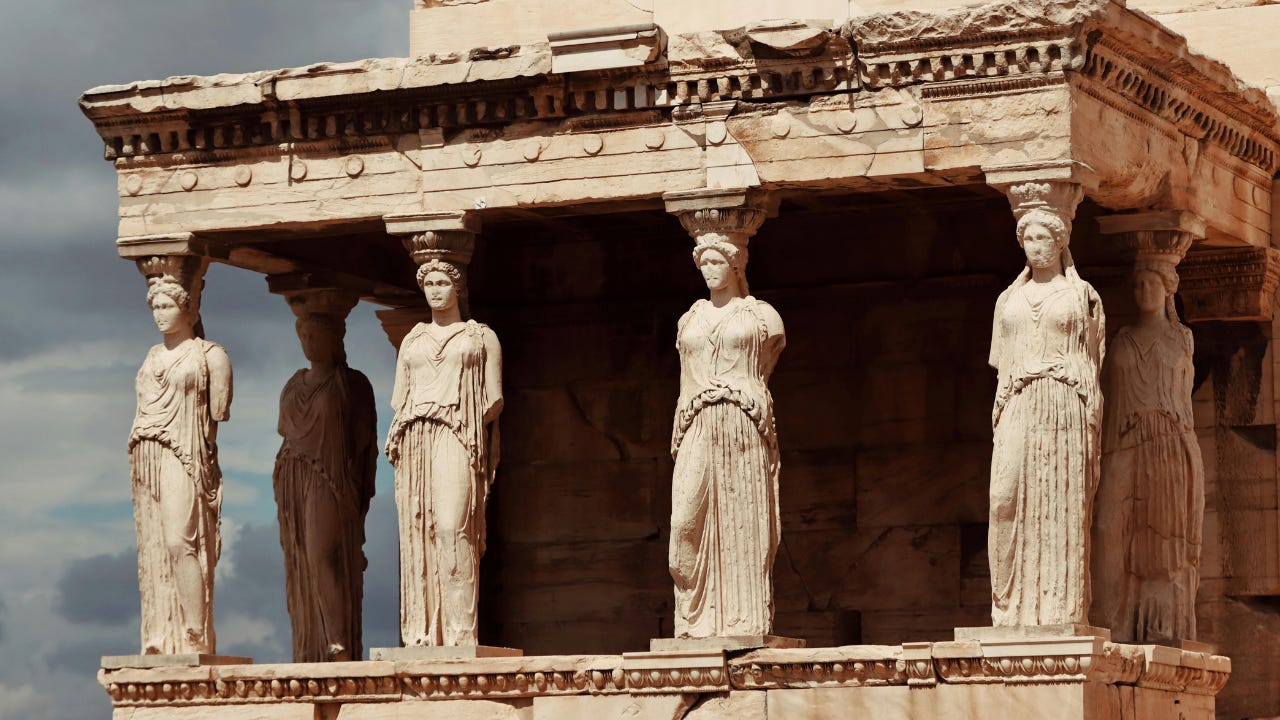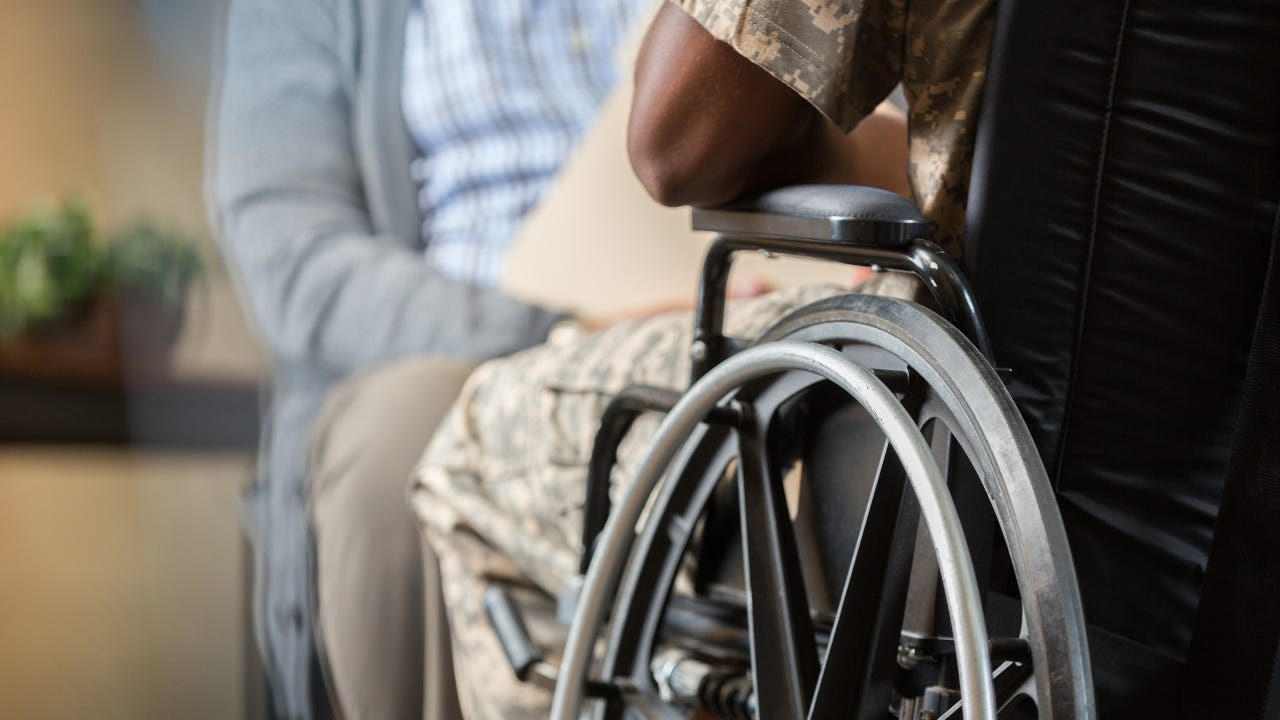Disability: from sacred to stigmatised to seen [Visibility Timeline]
Nov 12, 2025
‘Visibility Timeline’ is a series exploring how visibility (and invisibility) has shaped the way we show up and speak up throughout time. We’re starting with disability.
For most of this year, my daughter has been navigating dysautonomia and functional neurological disorder (FND). Dysautonomia affects the autonomic nervous system — the system that regulates heart rate, blood pressure, and digestion — causing it to function in unexpected ways. It can be invisible to others, even when painfully visible to those living with it. FND brings its own challenges, disrupting the way the brain communicates with the body.
The experience has been, at times, difficult and distressing, and at others, frustrating and demanding - calling on all our visibility-related skills to navigate it with grace. I mention this, with her consent, because October is Dysautonomia Awareness Month.
I also have a long history with chronic fatigue and long COVID, both of which are now recognised as involving autonomic nervous system dysfunction. So it won’t come as a surprise to learn that I’ve spent many years reflecting on how societies have treated bodies that move, function, or regulate differently from the norm.
From a societal viewpoint, the meaning we attach to disabled bodies has evolved over time, shaping how comfortable we feel speaking up about our bodies and the ways they work (or don’t).
Below is a brief and non-exhaustive timeline of significant moments in time. Moments that show us how difference has been made meaningful, and how those meanings either narrowed or expanded the space for disabled people to be visible.
Ancient worlds: Sacred and polluting
Ideas about bodily difference in the ancient world were varied and often contradictory, depending on geographic location and culture. In Greece, philosophers such as Aristotle recommended that infants born with visible impairments should not be raised, reflecting a civic ideal of bodily ‘fitness’ for the polis.1 In Sparta, this sometimes took the form of exposing disabled infants on Mount Taygetus.2 Such practices marked certain bodies as less-than-human, to be erased from community life.

Different understandings emerged elsewhere. In ancient Indian thought, and in Buddhist traditions, disability was often framed through the logic of karma - present conditions reflecting past deeds.3 Sometimes this was characterised negatively, sometimes not.
In interviews, Navajo (Diné) people have spoken of individuals with disabilities as having a special ‘gift’ or being ‘blessed’.4 Similarly, in Celtic traditions, blind harpers were often revered as possessing otherworldly insight and musical power. Whilst the absence of a direct word for ‘disability’ amongst First Peoples in Australia reflects a worldview where value is tied more to contribution and kinship roles than to physical conformity.5
What is clear as we scan different parts of the globe, is that from the beginning, disabled bodies were made to carry cultural meaning in many societies - sometimes revered as bearers of wisdom, sometimes erased as signs of failure.
Religion and exclusion
With the spread of organised religion, disability came to be increasingly framed in moral and spiritual terms. In the Hebrew Bible, the Book of Leviticus sets out purity laws excluding menstruating women and men with physical impairments from priestly service and ritual participation.6 Such texts reinforced the idea that bodily difference equated to spiritual deficiency.
Early Christian writers, including Augustine, often interpreted disability as a consequence of sin, echoing the fall of Adam and Eve.7 By the medieval period in Europe, impairment could be read as divine punishment, a sign of moral failing, or even evidence of demonic possession.8 Disabled people might be displayed as objects of pity, or alternatively cast out of community life, reinforcing their exclusion from both civic and spiritual spaces.

Saints’ lives occasionally portrayed impairment as a site of spiritual transformation, and healing miracles as signs of divine power.9 But overwhelmingly, the weight of Christian discourse positioned disabled people as spiritually suspect.
By contrast, in some Islamic traditions, people with impairments were exempt from ritual obligations, such as fasting or military service; yet, this recognition of bodily difference often cast them as exceptions rather than equals.10
Productivity and the ‘unfit’ body
With the Industrial Revolution came new measures of human value: output, speed, efficiency. Factories had little room for bodies that needed rest or adapted rhythms. By the late 19th century, the stopwatch was used to time the movement of factory workers, breaking their labour into measurable units.11 Those who could not conform to the stopwatch’s relentless pace were quickly categorised as ‘unfit’ or ‘unproductive.’
Benjamin Franklin’s earlier phrase ‘time is money’12 became popular industrial wisdom, echoing through factory floors where each body was measured by its efficiency.
The rise of eugenics reinforced this logic, portraying disabled people as a burden on the state and calling for their exclusion or sterilisation.13 Institutions grew rapidly, silencing and segregating those who did not fit the new industrial order.
The 20th century: The medical model
By the early 20th century, disability was primarily framed as a medical issue in Western societies - a pathology to diagnose, manage, or cure. The authority of doctors and institutions was expanding rapidly, and disabled people were captured by the medical gaze.14 For many, decisions about education, employment, and even family life came to be made not by them, but by medical professionals.
World War I and II veterans returning home with impairments forced societies to create new supports - pensions, prosthetics, rehabilitation programs - but these were uneven and often tied to ideas of ‘deservingness.’15 Disabled civilians, particularly those institutionalised in asylums or ‘special schools,’ remained hidden from public life.

Disability at this time was still being characterised as ‘problem’, but now it was one to be solved by medicine. In the process, disabled people’s voices were nearly erased.
The 19th and 20th centuries also saw women’s mental health heavily pathologised. Diagnoses such as ‘hysteria’ and ‘nervous disorders’ were disproportionately applied, and women — often for reasons of nonconformity or distress — were institutionalised in significant numbers (something we’ll explore in more detail later in this series).
‘Nothing about us without us’
By the second half of the 20th century, disabled people were tired of being spoken about but never listened to. Inspired by civil rights, feminist, and anti-colonial struggles, disabled activists began insisting on rights, not charity. Across the US and UK in the 1970s and 1980s, groups staged protests, sit-ins, and lawsuits demanding access to schools, workplaces, and public spaces. The 1977 504 Sit-In in San Francisco — the longest occupation of a federal building in US history — became a turning point.16
Disability came to be reframed as the product of social barriers — inaccessible buildings, discriminatory attitudes, inflexible work cultures — rather than the ‘fault’; of individual bodies.17 The difference was revolutionary.
Concrete changes followed: curb cuts in pavements, ramps in public buildings, recognition of sign languages, and the passing of anti-discrimination laws.18 Disabled voices were not just requesting a seat at the table - they were demanding, and often building, new tables of power.

The 21st century: invisibility and justice
Today, digital platforms have amplified disabled voices worldwide. Hashtags like #DisabledAndCute and #AccessibilityMatters circulate across Instagram and TikTok, creating new communities and celebrating pride in disabled identity.19
At the same time, invisible disabilities - from chronic illnesses like dysautonomia, ME/CFS, and long COVID, to neurodivergence such as ADHD and autism - remain contested.20 Many of us who live with these conditions face disbelief from doctors, workplaces, and even family, echoing older patterns of silencing. Visibility has increased, but being believed and accommodated lags behind.
In response, activists have developed the framework of disability justice, with queer, Black, and brown disabled thinkers such as Patty Berne and Mia Mingus leading the way.21 Disability justice moves beyond the rights-based language of the 20th century, insisting on intersectionality, collective liberation, and leadership from those most marginalised. It shifts the focus from legal access to cultural transformation, demanding that we rethink whose bodies, voices, and needs shape our common life.
As we mark Dysautonomia Awareness Month, it’s critical to remember that visibility is not just about being seen. It’s about being heard and being believed. Disability visibility must lead to disability justice and inform the creation of a world where all bodies, operating in a wide variety of ways, are celebrated and cared for, not treated as problems to be solved.
Tracing this very brief history, a pattern emerges: disabled bodies have long occupied the nexus of society’s anxieties about purity, productivity, and perfection. They’ve been pitied, pathologised, and politicised. Too rarely have they simply been listened to.
Aristotle, Politics, Book VII, 1335b20.
Plutarch, Life of Lycurgus, ch. 16.
Saha, S. “Karmic Philosophy and the Model of Disability in Ancient India,” Shanlax International Journal of Arts, Science and Humanities, vol. 7, no. 1 (2019). Kohrman, Matthew. Bodies of Difference: Experiences of Disability and Institutional Advocacy in the Making of Modern China (University of California Press, 2005).
Connors, Jeanne, Disabled People in Navajo Society, in Citizenship and Culture: the Role of Disabled People in Navajo Society (1993). Yazzie-Mintz, T. Traditional versus Contemporary Navajo Views of Special Education (ERIC Document ED417898, 1998).
First Peoples Disability Network, Culture is Inclusion: A Narrative of Aboriginal and Torres Strait Islander People with Disability (2017).
The Holy Bible, Leviticus 21:16–23.
Augustine, City of God, Book XII.
Metzler, Irina. Disability in Medieval Europe: Thinking about Physical Impairment in the High Middle Ages, c. 1100–1400 (Routledge, 2006).
Boddice, Rob, ed. Disability in the Christian Tradition: A Reader (Baylor University Press, 2012).
Rispler-Chaim, Vardit. Disability in Islamic Law (Springer, 2007).
Kanigel, Robert. The One Best Way: Frederick Winslow Taylor and the Enigma of Efficiency (Viking, 1997); Landes, David. Revolution in Time: Clocks and the Making of the Modern World (Harvard University Press, 1983).
Franklin, Benjamin. Advice to a Young Tradesman (1748); Thompson, E. P. “Time, Work-Discipline, and Industrial Capitalism,” Past & Present, no. 38 (1967): 56–97.
Kevles, Daniel. In the Name of Eugenics: Genetics and the Uses of Human Heredity (Harvard University Press, 1985).
Foucault, Michel. The Birth of the Clinic: An Archaeology of Medical Perception (Vintage, 1975).
Gerber, David. Disabled Veterans in History (University of Michigan Press, 2012).
Scotch, Richard. From Good Will to Civil Rights: Transforming Federal Disability Policy (Temple University Press, 1984).
Oliver, Michael. The Politics of Disablement (Macmillan, 1990).
Shapiro, Joseph. No Pity: People with Disabilities Forging a New Civil Rights Movement (Random House, 1993); Kayess, Rosemary & French, Phillip. Out of Darkness into Light? Introducing the Convention on the Rights of Persons with Disabilities (Human Rights Law Review, 2008).
Ellis, Katie. Disability and Digital Television Cultures (Routledge, 2019).
Bivens, Alicia. Chronic Illness and the Invisible in Contemporary Society (Palgrave Macmillan, 2020).
Berne, Patty. “Disability Justice – a Working Draft” (Sins Invalid, 2015); Mingus, Mia. Leaving Evidence blog (2009–present).




